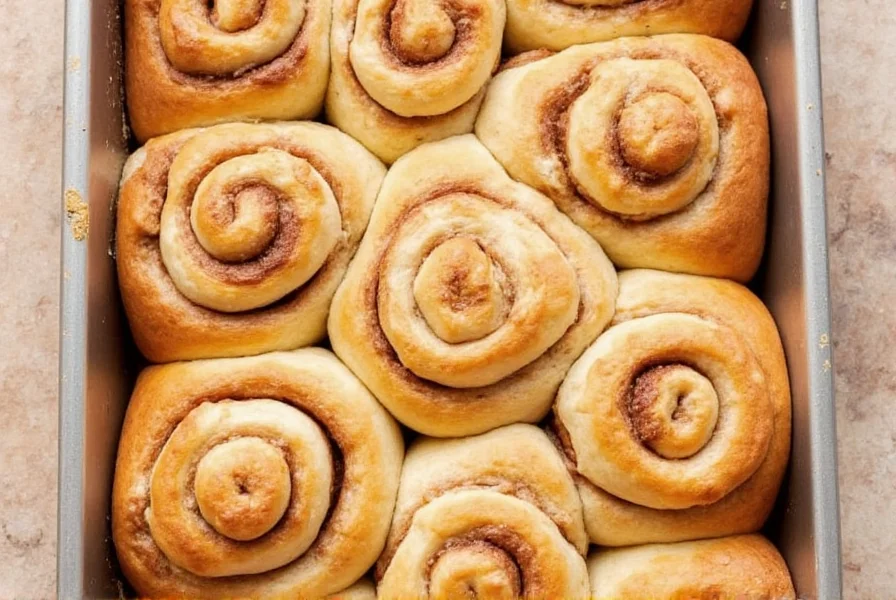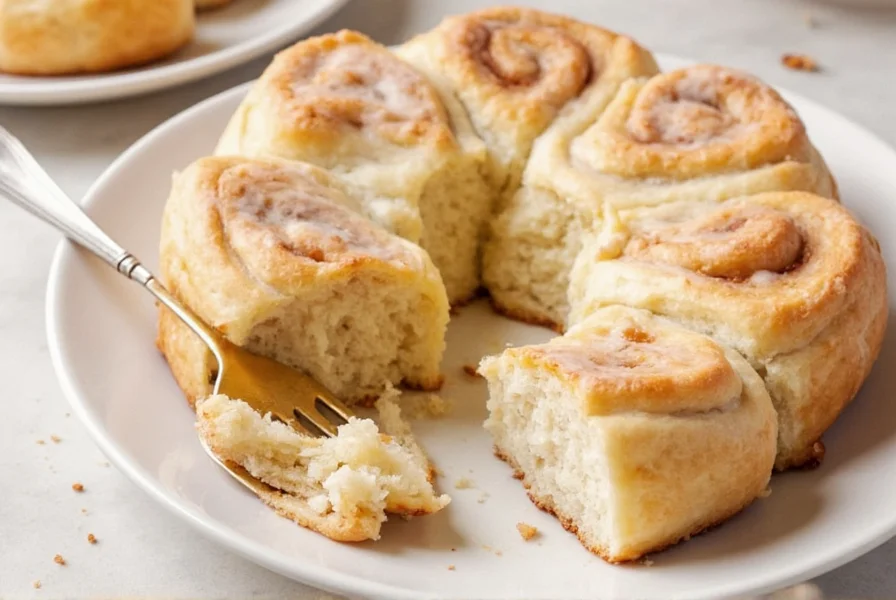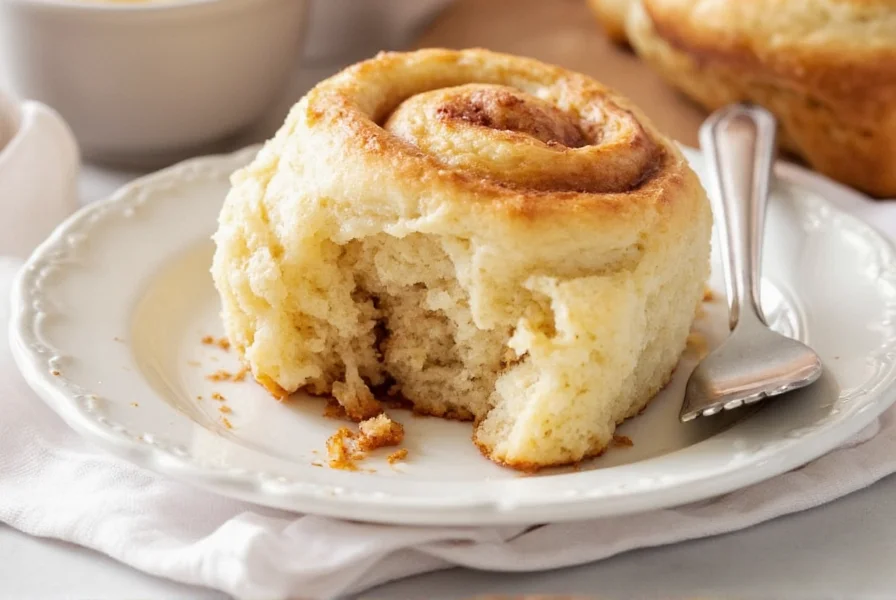Craving warm, gooey cinnamon rolls but don't have yeast or want to avoid the waiting game? You're in luck. This no-yeast cinnamon rolls recipe delivers bakery-quality results with minimal effort and zero fermentation time. Unlike traditional recipes that require hours of rising, these rolls go from mixing bowl to oven in minutes, making them perfect for last-minute breakfast emergencies or when you simply want cinnamon roll satisfaction without the wait.
Why Choose a No-Yeast Cinnamon Rolls Recipe
Traditional cinnamon rolls rely on yeast for that signature airy texture, but yeast-free versions offer distinct advantages. They're ideal when:
- You've run out of yeast or can't find it in stores
- You need cinnamon rolls immediately with no waiting for dough to rise
- You're sensitive to yeast or following a yeast-free diet
- You want a simpler process with fewer steps
While yeast-free cinnamon rolls have a slightly different texture (more like a cross between a muffin and traditional roll), they still deliver that irresistible combination of sweet dough, cinnamon swirl, and creamy icing.
Key Differences: Yeast vs. No-Yeast Cinnamon Rolls
| Characteristic | Traditional Yeast Rolls | No-Yeast Rolls |
|---|---|---|
| Preparation Time | 2-3 hours (including rising) | 25-30 minutes total |
| Texture | Light, airy, chewy | Softer, cake-like, tender |
| Leavening Agent | Yeast | Baking powder + baking soda |
| Flavor Profile | Slightly tangy, complex | Sweeter, more straightforward |
| Suitable For | planned breakfasts | immediate cravings |
Essential Ingredients for Perfect No-Yeast Cinnamon Rolls
The magic of this yeast-free cinnamon rolls recipe happens through a precise balance of baking powder and baking soda. Here's what you'll need and why each ingredient matters:
- All-purpose flour - Provides structure; don't substitute with gluten-free flour without adjustments
- Baking powder & baking soda - The yeast substitutes that create lift; use fresh ingredients for best results
- Cold butter - Creates flakiness; must be very cold for proper texture
- Buttermilk - Reacts with baking soda for extra rise and tender crumb
- Brown sugar - For both the dough and filling; creates moisture and rich flavor
- Cinnamon - Use Ceylon cinnamon for best flavor; avoid pre-mixed cinnamon sugar
Step-by-Step No-Yeast Cinnamon Rolls Recipe
Makes 9 rolls | Total time: 25-30 minutes
Dough Ingredients
- 2 cups all-purpose flour
- 1½ tsp baking powder
- ½ tsp baking soda
- ¼ tsp salt
- ⅓ cup cold unsalted butter, cubed
- ¾ cup buttermilk, cold
- 2 tbsp brown sugar
Filling Ingredients
- ¼ cup softened butter
- ½ cup packed brown sugar
- 1½ tbsp ground cinnamon
- 2 tbsp all-purpose flour
Cream Cheese Icing
- 2 oz cream cheese, softened
- 2 tbsp butter, softened
- ½ cup powdered sugar
- 1 tbsp milk
- ½ tsp vanilla extract
Instructions
- Prepare dry ingredients: In a large bowl, whisk together flour, baking powder, baking soda, and salt.
- Cut in butter: Using a pastry cutter or two knives, cut cold butter into flour mixture until it resembles coarse crumbs with pea-sized pieces.
- Add wet ingredients: Stir in cold buttermilk and brown sugar just until a shaggy dough forms. Don't overmix.
- Shape dough: Turn dough onto lightly floured surface and gently knead 3-4 times until it comes together. Roll into a 9x12 inch rectangle.
- Prepare filling: In small bowl, mix softened butter, brown sugar, cinnamon, and flour until paste-like.
- Spread filling: Evenly spread filling over dough, leaving ½ inch border on one long side.
- Roll dough: Starting from the long side opposite the border, tightly roll dough into log. Pinch seam to seal.
- Cut rolls: Using dental floss or sharp knife, cut into 9 equal slices.
- Bake: Place rolls cut-side down in greased 9-inch square pan. Bake at 375°F for 18-22 minutes until golden brown.
- Make icing: While rolls bake, beat cream cheese, butter, powdered sugar, milk, and vanilla until smooth.
- Finish: Drizzle warm rolls with icing and serve immediately.

Troubleshooting Common Issues
Even the best no-yeast cinnamon rolls recipe can encounter problems. Here's how to fix them:
- Dense or heavy rolls: You likely overmixed the dough or used warm ingredients. Keep everything cold and mix just until combined.
- Flat rolls: Check your baking powder and soda - they may be expired. These ingredients lose potency after 6 months.
- Dry texture: Overbaking is the culprit. Check rolls at 18 minutes; they're done when a toothpick comes out clean.
- Filling leaking out: You didn't leave enough border on one side when rolling, or the filling was too runny. Make sure to create a tight seal.
Delicious Variations to Try
Once you've mastered the basic yeast-free cinnamon rolls recipe, experiment with these tasty variations:
- Nutty version: Add ¼ cup chopped pecans or walnuts to the filling for extra crunch
- Apple cinnamon: Mix ½ cup finely diced apple into the filling
- Orange zest: Add 1 tbsp orange zest to the dough for a citrus twist
- Gluten-free: Substitute with 1:1 gluten-free flour blend (add ½ tsp xanthan gum)
- Vegan: Use plant-based butter and coconut milk instead of buttermilk

Storage and Reheating Tips
While no-yeast cinnamon rolls are best served fresh, you can store leftovers properly:
- Room temperature: Keep in airtight container for up to 2 days
- Refrigerator: Store for up to 5 days; reheat before serving
- Freezer: Freeze unbaked rolls on a baking sheet, then transfer to freezer bag. Bake from frozen, adding 5-7 minutes to baking time.
- Reheating: Microwave individual rolls for 15-20 seconds or warm in 300°F oven for 10 minutes
Frequently Asked Questions
Can I make cinnamon rolls without yeast that taste like the traditional version?
While no-yeast cinnamon rolls have a slightly different texture (more cake-like than airy), this recipe comes remarkably close to traditional rolls. The key is using buttermilk with baking soda for that slight tang and proper rise. Many testers can't tell the difference once topped with cream cheese icing!
Why does this no-yeast cinnamon roll recipe use both baking powder and baking soda?
This yeast-free cinnamon rolls recipe uses both leaveners for optimal results. Baking powder provides most of the lift, while baking soda reacts with the buttermilk's acidity for extra rise and tenderness. Using both creates the perfect balance of lift without any metallic aftertaste that can happen when using just one.
How can I prevent my yeast-free cinnamon rolls from becoming dry?
To keep your no-yeast cinnamon rolls moist: 1) Don't overbake (check at 18 minutes), 2) Use cold ingredients as specified, 3) Don't overmix the dough, and 4) Store properly in an airtight container. The brown sugar in both the dough and filling also helps retain moisture better than white sugar alone.
Can I prepare these cinnamon rolls without yeast the night before?
Yes! Assemble the rolled and cut cinnamon rolls in the baking pan, cover tightly, and refrigerate overnight. When ready to bake, let them sit at room temperature for 15 minutes while the oven preheats, then bake as directed (may need 2-3 extra minutes). This make-ahead method works perfectly with this yeast-free cinnamon rolls recipe.











 浙公网安备
33010002000092号
浙公网安备
33010002000092号 浙B2-20120091-4
浙B2-20120091-4